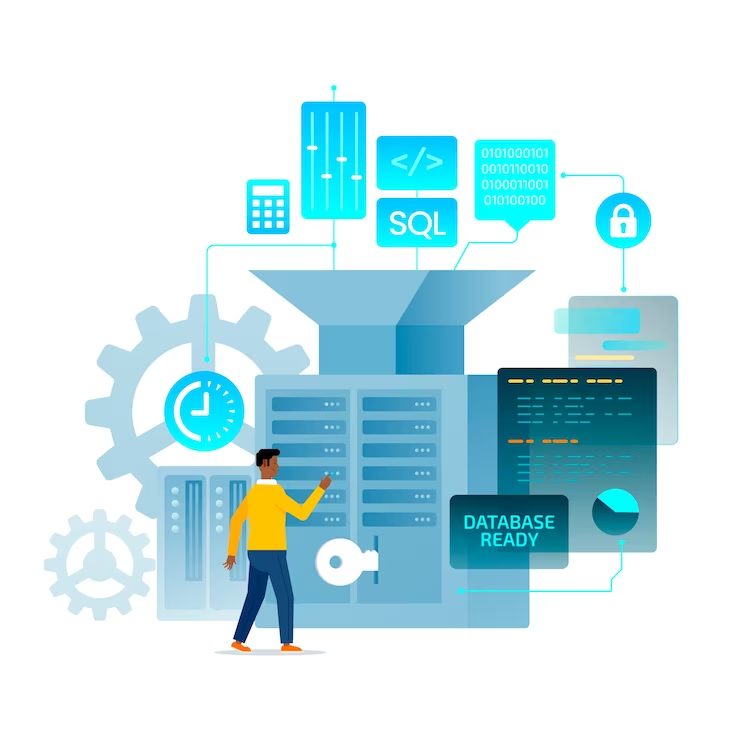Besides the day-to-day challenge of maintaining and keeping their IT infrastructure, companies also have to think about the globally changing trend of technology and the right steps to the future. IT infrastructure management is no longer a matter of how well you want to perform but a required action that is necessary for continued growth, competitiveness, and security.
This blog post focuses on the important aspects of IT infrastructure management and how companies need to adjust in order to be resilient and proactive in the era of technological advancements.
Strategic IT infrastructure management
The most strategic decision a business can make to safeguard its IT infrastructure is teaming up with a managed service provider (MSP). MSPs mainly are concerned with both providing and monitoring a specific set of services for their customers on the go.
The partnership can include specific services such as network management, cybersecurity, and cloud services, to managing entire IT infrastructure. Utilizing MSP’s professional service enables businesses to maintain a strong and secure IT infrastructure that can be scaled up and down as needed to meet future challenges.
The pillars of future-proof IT infrastructure management
- Scalability and flexibility:
A future-oriented IT structure must be able to grow or shrink as per the business’s changing needs without requiring a major overhaul. This flexibility allows businesses to not only quickly respond to market changes but also gives them the competitive edge to adopt new technologies or scale operations easily.
- Security and compliance:
With new cyber threats becoming more complex, the IT infrastructure is designed to deliver world-class security and compliance with regulatory standards. It is a process, which requires a progressive implementation of best cybersecurity technologies, performing security audits periodically, and abiding by legal or industry-specific standards. Data protection and system integrity are crucial to building trust and avoiding legal and financial problems.
- Cloud integration:
Cloud services integration in the IT infrastructure provides effortless efficiency, low cost, and flexibility. Through the cloud, companies can use on-demand computing resources to scale, implement remote work, ensure data redundancy, and improve disaster recovery. With the integration of cloud solutions, businesses can utilize the most up-to-date technological developments without investing heavily in physical hardware.
- Data management and analytics:
In the modern business world, which is driven by data, the ability to manage data and use analytics successfully is critical. This pillar is responsible for storing large amounts of data safely and also for analyzing this data in real-time. Deeper data analysis can lead to informed decisions, emerging possibilities, and improved operations allowing for data to become a strategic asset for the enterprise.
- Automation and AI integration:
With automation and artificial intelligence, the IT infrastructure management processes become simple and decision-making is improved. Automation minimizes the need for manual control for routine tasks, hence increasing efficiency and accuracy.
At the same time, AI enables predictions, process optimization, and personalized customer experience. In combination, automation and AI not only reduce operational expenses but also endow companies with all the necessary resources to compete in the market.
Strategies for future-proofing your IT infrastructure
- Continuous learning and adaptation:
This strategy focuses on staying up to date with new technologies and industry trends. A business must remain competitive by building a culture of continuous learning and empowering staff to acquire new skill sets. This is the approach that makes the organization’s IT infrastructure ready to grow in line with technological development and new market requirements.
- Invest in talent and training:
Understanding that the power of an IT infrastructure is also in its people, investing in the talent and training is pivotal. Through ongoing education and training, companies can be sure that their IT professionals are competent in the most recent technologies and expertise. This investment does not only improve the performance of the IT infrastructure but also boosts employee happiness and stability.
- Implement proactive maintenance:
Changing from a reactive maintenance model to a proactive one involves checking your IT system regularly and updating it to identify issues that could grow to be big problems before they occur. This approach helps the organization cut downtime, avoid data loss and boost the operational efficiency.
- Embrace digital transformation:
Digital transformation is the integration of digital technologies into all major areas of a business, changing the way it is organized and delivered to customers. Through digital transformation, companies can automate processes, enhance customer experience, and develop new digital products or services. With this approach, the IT infrastructure will not only be a support tool but also a driver of innovation and growth as well.
Conclusion
Investing in effective IT infrastructure management is no longer an option, but a strategic requirement that defines the fate of modern businesses. A partnership with MSP will help to strengthen the existing initiatives and bring in resources such as knowledge, efficiency, and innovation. While the challenges of digital environment become more complex, organizations that put the emphasis on future proofing of their IT infrastructure will be the most successful.



